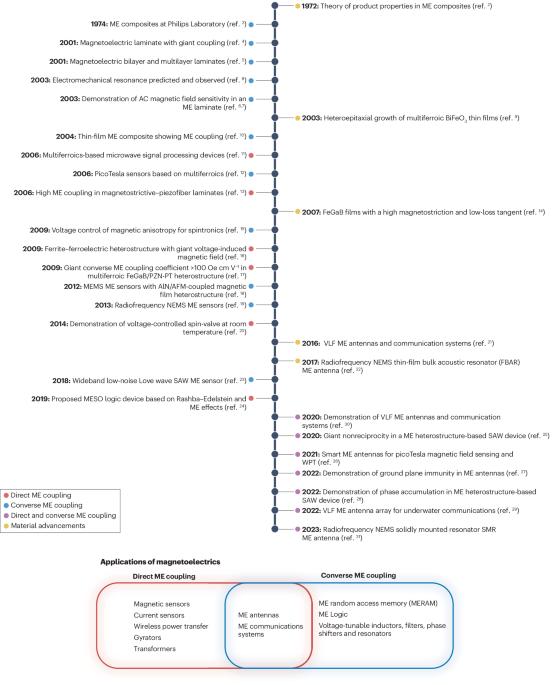Magnetoelectric microelectromechanical and nanoelectromechanical systems for the IoT
引用次数: 0
Abstract
The internet of things (IoT) has revolutionized society by creating a network of interconnected devices with sensors, processing ability and software for data exchange. However, the expansion of IoT places undue strain on energy resources. Thus, the development of low-power components is critical. Moreover, the demand for IoT has opened new markets for wearable technologies, necessitating innovations towards miniaturization. This rapid growth introduces further challenges in communication and environmental adaptability. Magnetoelectric (ME) microelectromechanical and nanoelectromechanical systems (M/NEMS) introduce unparalleled properties to reshape the IoT landscape. ME M/NEMS enable a 100,000× reduction in wavelength, resulting in reduced size and weight, and provide multifunctionality, such as simultaneous sensing, data transmission and wireless power transfer. With renewed interest in ME M/NEMS platforms, several disruptive technologies have emerged ranging from ultra-compact radiofrequency front-ends to quantum sensing, computing and communication networks. This Review delves into ME materials, ME composites and ME M/NEMS for IoT functions, including logic memory; magnetic sensing; wireless power transfer; ultra-compact antennas; power, radiofrequency and microwave electronics; and communication systems. Magnetoelectric (ME) microelectromechanical and nanoelectromechanical systems (M/NEMS) are vital for addressing the challenges of the internet of things (IoT) networks in size, energy efficiency and communication. This Review delves into ME materials and M/NEMS for IoT applications, such as sensing and communication technologies.


用于物联网的磁电微机电系统和纳米机电系统
物联网(IoT)通过创建一个由具有传感器、处理能力和数据交换软件的互联设备组成的网络,给社会带来了革命性的变化。然而,物联网的扩展给能源资源带来了过大的压力。因此,开发低功耗元件至关重要。此外,物联网的需求也为可穿戴技术开辟了新的市场,因此有必要向微型化方向创新。这种快速增长为通信和环境适应性带来了更多挑战。磁电(ME)微机电和纳米机电系统(M/NEMS)具有无与伦比的特性,将重塑物联网的格局。ME M/NEMS 可使波长减少 100,000 倍,从而减小尺寸和重量,并提供多功能性,如同时传感、数据传输和无线功率传输。随着人们对 ME M/NEMS 平台的重新关注,出现了从超小型射频前端到量子传感、计算和通信网络等多项颠覆性技术。本综述深入探讨了用于物联网功能的 ME 材料、ME 复合材料和 ME M/NEMS,包括逻辑存储器、磁感应、无线电力传输、超小型天线、电源、射频和微波电子设备以及通信系统。
本文章由计算机程序翻译,如有差异,请以英文原文为准。
求助全文
约1分钟内获得全文
求助全文

 求助内容:
求助内容: 应助结果提醒方式:
应助结果提醒方式:


